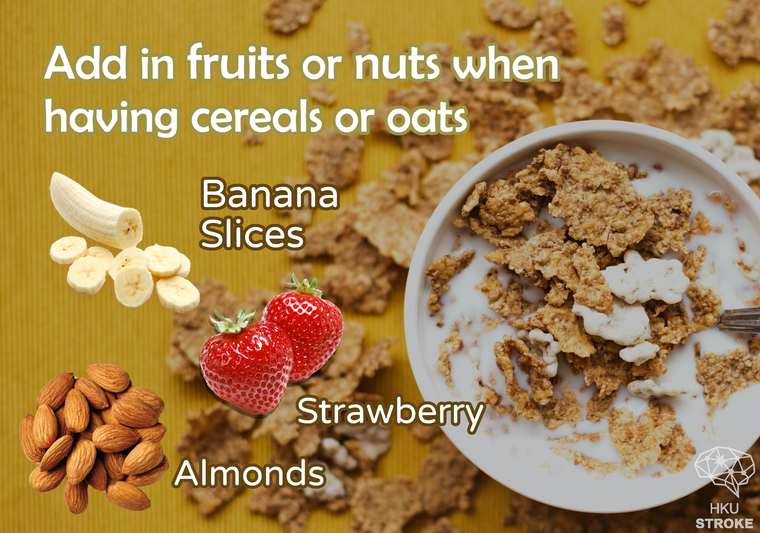What is dietary fibre?
Dietary fibre can be found in all plant-based foods, including vegetables, fruits, legumes and lentils, grains etc. Differing from the three macronutrients that are our main sources of energy – carbohydrates, protein and fat, dietary fibre cannot be digested or absorbed by the body, and is being excreted in stool. Despite of that, they are not worthless to our body. Contrarily they carry out important functions in maintaining our health.

Practical tips for a “high fibre” diet
The health benefits of dietary fibre
A diet high in dietary fibre can help prevent various diseases and improve our overall health:
-
To prevent constipation – dietary fibre can increase the bulk in stool volume and stimulate the bowel to move. Its ability to absorb water can help soften up stool and keeping the large bowl moist, causing easier passing of stool.
-
Maintaining intestinal health, preventing bowel related cancer – dietary fibre can help to reduce storage time of food remnants in the intestines, in turn minimising potential cancer-causing substances to accumulate in our bodies. Dietary fibre in the large bowel are being fermented and converted to short chain fatty acids – a source of energy that feeds the bowel cells and maintaining bowel health.
-
Weight management and reducing risks of obesity – foods that are rich in dietary fibre take more time to chew and aids with satiety, preventing us from overeating.
-
Stabilising blood sugar level and diabetes control – soluble fibre can slow down digestion of the small intestine, causing gradual release of sugar into the blood stream.
-
Lowering total and “bad” cholesterol level, reducing risks of heart diseases – for instance, the soluble fibre β-glucan found in oats and barley can bind with bile salts, removing additional sources of cholesterol from food by reducing its absorption from the small intestine.
Q&A
How to ensure adequate consumption of dietary fibre?
-
“Two plus Three Every Day”
-
Dietary fibre can only be found in foods that are of plant origin. Try following the Department of Health campaign “Two plus Three Every Day”, meaning that you should aim for eating 2 serves of fruit (1 serve is equivalent to a fist size apple or orange, or half a piece of medium sized banana) and 3 serves of vegetables (1 serve is equivalent to half a bowl 250-300 mL worth of cooked vegetables, or one bowl of salad greens) per day.
-
-
When processing fruits & vegetables
-
it is best to reserve its skin (e.g. eating apples or grapes with skin on) and opting for fresh fruit over fruit juice, so that the goodness of dietary fibre are not lost
-
If having juice, try mixing back in the pulps that have been separated out
-
-
Breakfast
-
choose wholemeal or grainy breads over white bread, or using high fibre cereals with milk
-
For hot options, one may consider oatmeal, or adding dried beans, barley etc. into white congee for a mixed grain version
-
-
Lunch and dinner
-
you may try substituting part of the white rice with red or brown rice, or using root vegetables as your carbohydrate source for that meal (such as potato, sweet potato or corn)
-
Use a variety of vegetables of different colours to accompany meats, for instance leafy greens, melons, mushrooms, tomatoes etc
-
Try using legumes or its products like kidney beans, chick peas, tofu to replace some of the meats
-
Making use of fruits as dessert
-
-
Snack
-
Vegetables are great as a snack, such as cucumber or carrot sticks for dipping houmous
-
Nuts or fruits also make a good fit in during snack time
-
If you are looking into increasing your daily fibre intake, this is best achieved in a step-wise approach. It is also important to ensure you are well hydrated with at least 6 to 8 cups (250mL) of fluids per day. Not only it can maximise the benefits of dietary fibre, it can also help to relief on body discomforts upon adapting the increased dietary fibre intake such as bloating, diarrhoea, farting etc.










